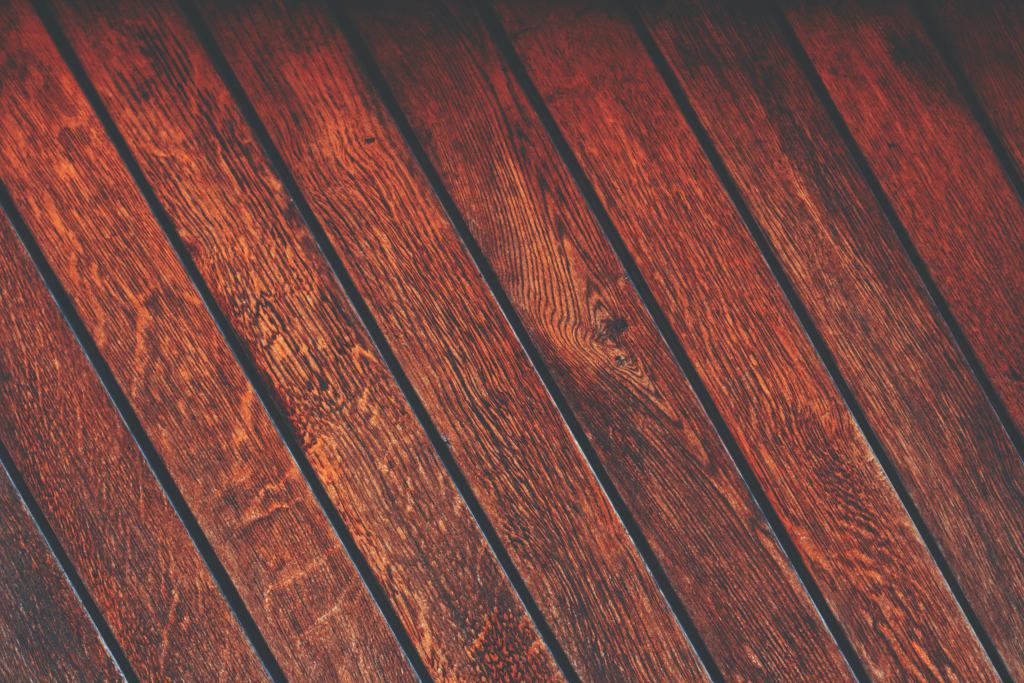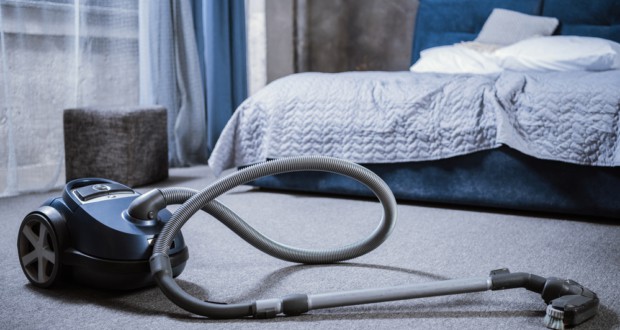Wood wall panels combined with a fireplace, indoor smoking, or burned dishes on a stove can easily contribute to a persistent smoky smell in your home. Wood paneling simply has this one flaw of being very porous, especially for small odor molecules, as with smoke.
Having a home that smells of smoke is not only an unpleasant experience but also unhealthy. Luckily, it takes very little effort to get rid of the smoke smell in your wooden walls, and in this article, we’re going to teach you how.
How to Get Smoke Smell Out of Wood Walls
Before you start with any specific treatment for your wood walls, it’s essential to take proper preparation steps to ensure efficiency and success with smoke odor removal.
First, use a plain cotton dust cloth to wipe the paneling and remove any debris or dust lingering on the surface.
Second, put a brush on the vacuum cleaner hose and vacuum the paneling. Make sure to cover every inch from the bottom to the top. If there are any indentations or holes in the paneling, use the crevice attachment for your vacuum to access and clean inside the holes.
Third, use a warm, damp cloth to wipe the walls and air out the room. If you can create a draft, that’s even better, as this will bring more fresh air into the room.
If the lingering smoke was super fresh and not many molecules were sticking onto the paneling, the preparation procedure may have already solved the problem. However, if it didn’t (which is more likely), here are some tips on treating your wood walls to eliminate the smell of smoke.
White Vinegar Solution
White vinegar is one of the most popular household solutions for cleaning annoying stains and removing persistent odors. Besides being accessible and cheap, white vinegar is also relatively easy to use. For cleaning purposes, it’s best to use the distilled version. You can make the distilled solution yourself or use commercially available products.
To prepare your distilled solution with white vinegar, you first need to dilute the vinegar in water at a 1:1 or 1:4 ratio (depending on how strong you want it). Once the DIY solution is ready, pour it into a spraying bottle. Make sure the bottle is full, as you’ll need a large amount of liquid to cover the whole wall.
Start at one end of the wooden wall and spray the solution directly. As you spray, parallelly wipe the vinegar with a cloth. Do this for the entire wall and leave no part uncovered.
Then, you can enhance the effect by filling bowls or Tupperware with vinegar and leaving them uncovered in the room’s corners. Let the bowls sit in the room at least overnight, or longer, if possible. The vinegar should absorb the smell of smoke from the wooden walls.
If you like, you can pour a few drops of some essential oil into the vinegar. For example, lavender or citrus oils will leave a pleasant scent in the room after the vinegar evaporates.
Lemon Juice

Photo by Precious Plastic Melbourne on Unsplash
In some cases, vinegar may be enough, but to ensure your walls are clean and free of lingering odor molecules, give them a gentle scrub with lemon juice, too.
Thanks to citric acid, lemon juice successfully combats unpleasant odors. Not only does it make the unwanted smells go away, but it also leaves a pleasant, fresh scent afterward.
When applying lemon juice to your walls, don’t apply the liquid from the squeezed lemon directly onto the wood. It can damage or stain it. Rather, pour the concentrated, freshly squeezed lemon into a spray bottle of warm water. Then, do the same procedure as the vinegar: spray and wipe with a mop. Make sure to cover all spots.
Baking Soda and a Sponge
If your wooden panels are affected to such an extent that you can also see the smoke stains on the surface, we recommend the baking soda and sponge method, which should also help remove the stains.
It’s worth noting that heavy smoke stains are best removed with mineral spirits, such as baking soda.
Nevertheless, you can also use the plain old baking soda you have at home to make your own cleaning solution. Here’s how.
First, dissolve two or three tablespoons of baking soda in warm water. Second, pour the solution into a spray bottle and apply it to the wooden wall. Finally, let it dry, then remove any excess powder or white stains with a damp cotton cloth.
Flaxseed Oil and Gum Turpentine
Flaxseed oil can penetrate a wooden surface, nourishing its fibers and enhancing its natural beauty. It also has long-term protective effects from moisture and regular wear and tear.
Gum turpentine is a natural resin obtained from certain pine trees with solvent properties, making it an excellent choice for cleaning and preparing wood surfaces.
First, mix eight tablespoons of flaxseed oil and four tablespoons of gum turpentine into a bucket with two gallons of warm water.
Second, put a rubber glove on your hand and then hand-stir the mixture. Take a large sponge or a piece of cloth and damp it into the warm solution. Wring it well to avoid any dripping.
Finally, wash the paneling with that sponge and try to follow the wood grain with your motions. Warm water and turpentine should successfully remove the stains and grime, while the oil has restorative power and should give the shine back to your wooden walls.
Citrus Cleaner
Like lemon juice and water solution, cleaners based on citric acid give freshness to your indoor space. On top of that, they’re good at cleaning wooden surfaces and paneling after vinegar application.
Apply the citric cleaner on a damp cloth and give the wood walls a good wipe, top to bottom. Let the cleaner dry on the wall unless the instructions say you should rinse it.
Oil Soap

Photo by Sarah Chai
If you don’t have a citrus cleaner at hand, you can use oil soap instead.
Dissolve a liquid oil soap of your choice in water. Read the instructions on the soap packaging. If, for some reason, there’s no precise instruction, you can’t make a mistake if you dilute ¼ cup of oil soap per gallon of water. Stir it with a wooden spoon or hand while wearing a rubber glove.
Then, use a sponge or a piece of cloth for washing. Wipe the panels from top to bottom and leave to dry. Usually, no rinsing is needed, as soap oil has protective qualities and should dry on the wood.
Apply Wax
For rather fine or smooth wooden walls, apply some wax to protect the wood from collecting dirt and slow down the smell absorption. Before applying the wax, make sure to clean the walls using any of the above-mentioned methods.
There are different types of wax that work well here. In our experience, it’s best to use beeswax and paste wax, but other protective wood wax types should also work.
When applying the wax, use a small cotton cloth and circular motions.
Once you’re done with the wax application, remove any excess wax by buffing the paneling. This will leave a lovely patina on the wood and keep it safe from damage or smell absorption.
Final Word
Wooden walls that smell of smoke are hard to be around. Besides the unpleasant experience, it’s also harmful to one’s health.
Removing the smoke smell from wooden walls is simple, and many options exist. However, the work is quite tedious.
That’s why we recommend doing this on a work-free day so that you can take your time and follow all the steps.
If one procedure doesn’t work out, you can (and you usually should) combine it with other methods. For example, after applying vinegar, it is generally recommended to use some cleaner based on citric acid. This can be plain lemon juice from your kitchen or, what’s even more effective, a citrus cleaner.





Leave a Reply